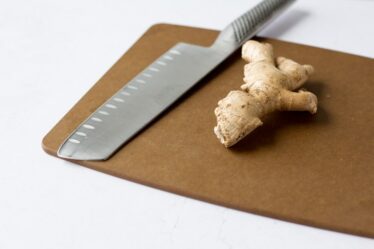
Malt vinegar is a type of vinegar that is made from malted barley. It has a distinct flavor that is both tangy and slightly sweet, making it a popular condiment in many cuisines around the world. Malt vinegar has a long history, dating back to ancient times when it was used for its preservative properties.
The production of malt vinegar begins with the malting process, where barley is soaked in water and allowed to germinate. The germinated barley is then dried and ground into a coarse flour called malt. This malt is then mixed with water and allowed to ferment, which converts the sugars in the malt into alcohol. The alcohol is then oxidized into acetic acid by bacteria, resulting in vinegar.
Key Takeaways
- Malt vinegar has a long history and is a popular condiment in the UK.
- Using malt vinegar in cooking can add depth and tangy flavors to your dishes.
- Malt vinegar marinades can elevate the taste of meat and seafood.
- Malt vinegar can be used in salad dressings, sauces, and pickling to add a tangy twist to your greens and preserve fruits and vegetables.
- Malt vinegar glazes can add a sweet and sour coating to your roasts.
The Benefits of Using Malt Vinegar in Your Cooking
Malt vinegar not only adds flavor to your dishes but also provides several nutritional and health benefits. It is low in calories and fat, making it a healthier alternative to other condiments like mayonnaise or ketchup. Malt vinegar also contains small amounts of vitamins and minerals, including potassium, calcium, and iron.
In terms of health benefits, malt vinegar has been found to have antimicrobial properties, which can help prevent the growth of harmful bacteria in food. It also has antioxidant properties, which can help protect against cell damage caused by free radicals. Additionally, malt vinegar has been shown to have a positive effect on blood sugar levels, making it a good choice for those with diabetes.
Culinarily, malt vinegar adds a tangy and slightly sweet flavor to dishes. It can be used as a marinade for meats and seafood, as a dressing for salads, as an ingredient in sauces and dips, as a pickling agent for vegetables and fruits, as a glaze for roasts, as an ingredient in baked goods, as a base for dips and spreads, and even as a unique addition to cocktails.
Malt Vinegar Marinades: Elevating Your Meat and Seafood
Using malt vinegar as a marinade can help tenderize meats and seafood while adding flavor. To make a malt vinegar marinade, simply combine malt vinegar with other ingredients such as oil, herbs, spices, and garlic. The acidity of the vinegar helps break down the proteins in the meat or seafood, resulting in a more tender and flavorful dish.
Malt vinegar marinades work well with a variety of meats and seafood. It pairs particularly well with beef, pork, lamb, chicken, and fish. The tangy flavor of the vinegar complements the richness of the meat or seafood, creating a delicious combination.
When using malt vinegar marinades, it’s important to marinate the meat or seafood for an appropriate amount of time. For tougher cuts of meat, such as beef or pork roasts, marinating overnight is recommended. For more delicate cuts of meat or seafood, such as chicken breasts or shrimp, marinating for 30 minutes to an hour is usually sufficient.
Salad Dressings and Sauces: Adding Tangy Flavors to Your Greens
| Salad Dressings and Sauces | Tangy Flavors | Greens |
|---|---|---|
| Ranch Dressing | Buttermilk, Garlic, Onion, Dill | Lettuce, Tomatoes, Cucumbers |
| Balsamic Vinaigrette | Balsamic Vinegar, Olive Oil, Mustard | Arugula, Spinach, Radicchio |
| Honey Mustard Dressing | Honey, Mustard, Lemon Juice | Chicken, Bacon, Avocado |
| Caesar Dressing | Garlic, Anchovy, Parmesan Cheese | Romaine Lettuce, Croutons |
| Thousand Island Dressing | Ketchup, Mayo, Pickles, Onion | Iceberg Lettuce, Tomatoes, Bacon |
Malt vinegar can be used to make tangy and flavorful salad dressings. To make a simple malt vinegar salad dressing, combine malt vinegar with olive oil, Dijon mustard, honey, salt, and pepper. Whisk the ingredients together until well combined and drizzle over your favorite salad greens.
In addition to salad dressings, malt vinegar can also be used in other sauces and dips. It can be added to mayonnaise to create a tangy aioli or mixed with ketchup to make a zesty cocktail sauce. Malt vinegar can also be used as an ingredient in barbecue sauces or as a base for tangy dipping sauces for fries or vegetables.
When using malt vinegar in salad dressings and sauces, it’s important to balance the flavors. The tangy acidity of the vinegar can be overpowering if used in excess. Start with a small amount and adjust to taste. You can always add more vinegar if desired, but it’s difficult to remove it once it’s been added.
Pickling with Malt Vinegar: Preserving Vegetables and Fruits
Malt vinegar is a popular choice for pickling vegetables and fruits due to its tangy flavor and acidity. To make a malt vinegar pickle, combine malt vinegar with water, sugar, salt, and spices such as dill, garlic, or mustard seeds. Bring the mixture to a boil and pour over your prepared vegetables or fruits.
Malt vinegar pickles work well with a variety of vegetables and fruits. Some popular choices include cucumbers, onions, carrots, beets, green beans, and even fruits like apples or pears. The acidity of the vinegar helps preserve the vegetables or fruits while adding a tangy flavor.
When pickling with malt vinegar, it’s important to use the correct ratio of vinegar to water. The acidity of the vinegar is what helps preserve the pickles, so using too much water can result in a less acidic pickle that may spoil more quickly. Follow a trusted recipe or use a pickling mix specifically designed for use with malt vinegar.
Malt Vinegar Glazes: Sweet and Sour Coatings for Your Roasts

Malt vinegar can be used to create sweet and sour glazes for roasts, adding depth of flavor and moisture to the meat. To make a malt vinegar glaze, combine malt vinegar with brown sugar, soy sauce, garlic, and other spices or herbs. Brush the glaze onto your roast during the last few minutes of cooking.
Malt vinegar glazes work well with a variety of meats, including beef, pork, lamb, and even chicken. The tangy flavor of the vinegar pairs well with the richness of the meat, creating a delicious combination. The glaze also helps to keep the meat moist and adds a caramelized crust.
When using malt vinegar glazes, it’s important to apply the glaze towards the end of the cooking process. The sugars in the glaze can burn if applied too early, resulting in a bitter taste. Brush the glaze onto the meat during the last 10-15 minutes of cooking, or as directed in your recipe.
Baked Goods with Malt Vinegar: Adding Moisture and Flavor to Your Cakes
Malt vinegar can be used in baking to add moisture and flavor to cakes and other baked goods. It reacts with baking soda to create carbon dioxide, which helps the batter rise and creates a lighter texture. The acidity of the vinegar also helps to tenderize the gluten in the flour, resulting in a more tender crumb.
To use malt vinegar in baking, simply substitute it for an equal amount of another liquid ingredient, such as milk or water. For example, if a recipe calls for 1 cup of milk, you can use 1 cup of malt vinegar instead. The vinegar will not affect the flavor of the baked goods but will help create a moist and tender texture.
Malt vinegar works well in a variety of baked goods, including cakes, muffins, quick breads, and even cookies. It pairs particularly well with flavors like chocolate or spices such as cinnamon or ginger. Experiment with different recipes to find your favorite combinations.
When using malt vinegar in baked goods, it’s important to use it in moderation. Too much vinegar can affect the texture and taste of the final product. Start with a small amount and adjust to taste. You can always add more vinegar if desired, but it’s difficult to remove it once it’s been added.
Malt Vinegar Dips and Spreads: Perfect for Snacks and Appetizers
Malt vinegar can be used to create tangy and flavorful dips and spreads that are perfect for snacks and appetizers. To make a simple malt vinegar dip or spread, combine malt vinegar with ingredients such as mayonnaise, sour cream, cream cheese, or Greek yogurt. Add herbs, spices, or other flavorings to taste.
Malt vinegar dips and spreads work well with a variety of snacks and appetizers. They can be served with vegetables, chips, crackers, or bread. The tangy flavor of the vinegar adds a zesty kick to the creamy base, creating a delicious combination.
When making dips and spreads with malt vinegar, it’s important to balance the flavors. The tangy acidity of the vinegar can be overpowering if used in excess. Start with a small amount and adjust to taste. You can always add more vinegar if desired, but it’s difficult to remove it once it’s been added.
Malt Vinegar Cocktails: Unique and Refreshing Drinks for Any Occasion
Malt vinegar can be used to create unique and refreshing cocktails that are perfect for any occasion. To make a malt vinegar cocktail, combine malt vinegar with your choice of spirits such as vodka, gin, or rum. Add other ingredients such as fruit juice, simple syrup, or soda water to create your desired flavor profile.
Malt vinegar cocktails work well with a variety of spirits. The tangy flavor of the vinegar adds a unique twist to classic cocktails like the Moscow Mule or the Tom Collins. It can also be used to create new and inventive drinks that are sure to impress your guests.
When using malt vinegar in cocktails, it’s important to balance the flavors. The tangy acidity of the vinegar can be overpowering if used in excess. Start with a small amount and adjust to taste. You can always add more vinegar if desired, but it’s difficult to remove it once it’s been added.
Tips and Tricks for Cooking with Malt Vinegar: Dos and Don’ts, Storage, and More.
When cooking with malt vinegar, there are a few dos and don’ts to keep in mind. Do use malt vinegar in moderation, as the tangy flavor can be overpowering if used in excess. Do experiment with different recipes and flavor combinations to find your favorite uses for malt vinegar. Do store malt vinegar in a cool, dark place to maintain its quality and flavor.
Don’t use malt vinegar in recipes that require a milder or more subtle flavor. Don’t substitute malt vinegar for other types of vinegar unless the recipe specifically calls for it. Don’t use malt vinegar in recipes that require a low acidity level, such as canning or preserving.
To store malt vinegar, keep it in a cool, dark place away from direct sunlight and heat sources. Once opened, it can be stored at room temperature for several months. However, for optimal flavor and quality, it’s best to use it within a few months.
In conclusion, malt vinegar is a versatile ingredient that can be used in a variety of ways to enhance the flavor of your dishes. Whether you’re marinating meats and seafood, making salad dressings and sauces, pickling vegetables and fruits, glazing roasts, baking goods, creating dips and spreads, or mixing cocktails, malt vinegar adds a tangy and slightly sweet flavor that is sure to impress. Experiment with different recipes and flavor combinations to find your favorite uses for malt vinegar.
If you’re a fan of using unique ingredients in your recipes, you’ll love this article on Flavorful Sips about discovering Yuja Hwachae, the Korean citrus delight. But if you’re looking for something sweet, check out their DIY guide on making a delicious raspberry cake filling. And for those who want to embark on a tropical flavor adventure, don’t miss their article on Mamey Sapote. With so many exciting recipes to explore, you’ll be inspired to try new flavors and techniques in your own kitchen.



